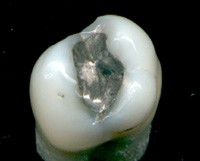Advertisement
Grab your lab coat. Let's get started
Welcome!
Welcome!
Create an account below to get 6 C&EN articles per month, receive newsletters and more - all free.
It seems this is your first time logging in online. Please enter the following information to continue.
As an ACS member you automatically get access to this site. All we need is few more details to create your reading experience.
Not you? Sign in with a different account.
Not you? Sign in with a different account.
ERROR 1
ERROR 1
ERROR 2
ERROR 2
ERROR 2
ERROR 2
ERROR 2
Password and Confirm password must match.
If you have an ACS member number, please enter it here so we can link this account to your membership. (optional)
ERROR 2
ACS values your privacy. By submitting your information, you are gaining access to C&EN and subscribing to our weekly newsletter. We use the information you provide to make your reading experience better, and we will never sell your data to third party members.
Environment
Hair Reveals Source Of People’s Exposure To Mercury
Toxic Exposure: Mercury isotopes in human hair illuminate dietary and industrial sources
by Katharine Sanderson
October 26, 2011

Determining the source of a person’s exposure to mercury could become simpler thanks to the development of isotopic measurements of the metal in human hair (Environ. Sci. Technol., DOI: 10.1021/es202353m).
Mercury is a major global health problem: Ingesting the toxic metal can cause neurological problems, kidney disease, and cancers. It enters the human body when people eat polluted fish, or when people breathe in gases from industrial processes including small-scale gold mining in countries such as the Philippines and Bolivia. Miners there use mercury to extract gold from ores, boiling it at high temperatures and releasing toxic vapors.
Scientists can measure the total amount of mercury in a person’s blood, urine, or hair but it is difficult to determine how much mercury comes from different sources. In the past five years, researchers have turned to isotope signatures as ‘fingerprints’ of various mercury sources. A team of scientists from France has now picked out certain mercury isotopes to identify sources of the metal in samples of people’s hair, the least invasive sampling method.
Using inductively coupled plasma mass spectrometry, Jeroen Sonke from the Midi-Pyrénées Observatory, of Paul Sabatier University, in Toulouse, and colleagues, including researchers at Bolivia’s Higher University of San Andrés, measured mercury isotopes in hairs from people in three populations: a group from the Bolivian Amazon region whose diet was mainly freshwater fish; Bolivian miners who used mercury to extract gold and who didn’t eat much fish; and a group from France. Each group had a single source of mercury exposure: freshwater fish, inorganic mercury, and seawater fish, respectively.
“These three different groups have very different isotope signatures in their hair,” says Sonke. The team then used this information to determine the sources of mercury of another group of miners, who had been exposed to all three sources of mercury. The method worked well for tracking the people’s exposure to inorganic mercury from mining, which had not previously been studied in hair samples.
The project is an early but promising step toward using human hair to monitor people’s exposure to different sources of mercury, says Sonke. “It really puts hard evidence on what they’re exposed to,” he says. For example, it could prove “without a doubt,” he says, that occupational exposure to liquid mercury caused a gold miner’s mercury intoxication symptoms. Sonke hopes to visit other populations with unique mercury exposures – like the Inuit, who eat highly polluted marine fish, or people in areas of China where rice is polluted with mercury from industrial plants. That way, he can measure the isotopic signature of each source of mercury.
Sonke’s work may have few immediate applications, says Peter Appel, from the Geological Survey of Denmark and Greenland, who works with groups exposed to mercury in the Philippines and other areas, but he says the study is important and necessary.





Join the conversation
Contact the reporter
Submit a Letter to the Editor for publication
Engage with us on Twitter